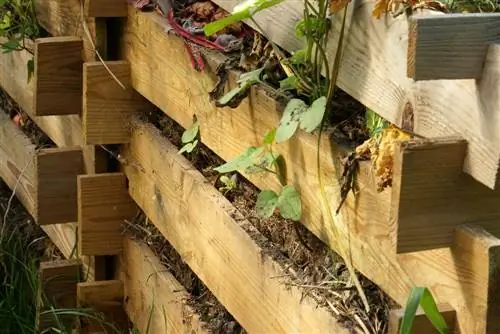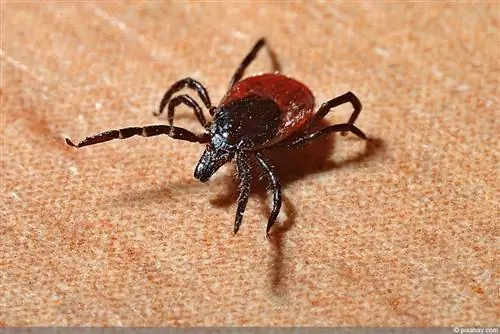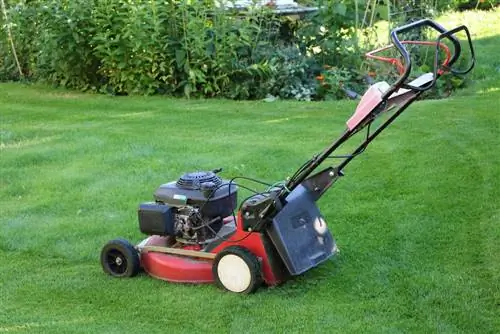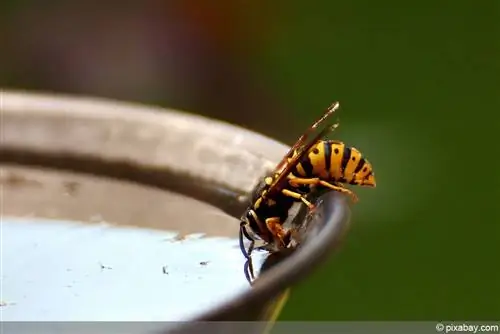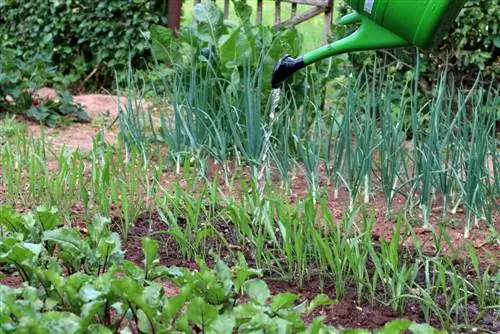- Author admin [email protected].
- Public 2023-12-17 03:39.
- Last modified 2025-01-24 12:45.
It couldn't be more natural and sustainable: fertilizing with compost not only provides the plants in your garden with optimal nutrients, but also protects the environment. The effect does not just last in the short term, but improves the properties of the soil for many years. There are no side effects. So it's high time to finally start composting.
Advantages
Composting was out for a long time. Ready-mixed fertilizer from specialist retailers seemed to promise better and, above all, quicker results. A compost heap or a compost bin in the garden also didn't look very attractive to many gardeners. In addition, composting had a reputation for being not only quite complicated, but also old-fashioned. Fortunately, that has largely changed today. The benefits of compost are being rediscovered more and more - especially in times when awareness of environmentally friendly, sustainable action is increasing. There is nothing to dispute the tangible benefits of compost. Here are the most important ones:
- sustainable improvement of the garden soil
- Increasing fertility
- more resilient plants
- optimal supply of vital soil organisms
- Cost savings because less fertilizer is required
Before you can take advantage of these advantages, you first have to compost. This is fundamentally a very complex biological process in which chemistry and physics also play a role that should not be underestimated. Fortunately, you don't need to know all the details of this process. And as a gardener you don't have to do a lot to do it.
The Principle
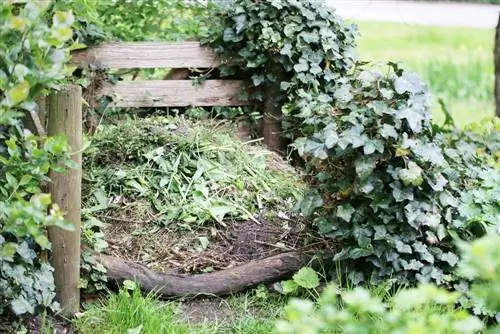
Composting is part of the world's natural nutrient cycle. The principle is very simple: Organic substances are broken down under the influence of oxygen and microorganisms. On the one hand, this degradation releases carbon dioxide. On the other hand, this also creates a lot of water-soluble minerals, most of which can be used as fertilizer for plants. These substances are:
- Nitrates
- Phosphates
- Ammonium s alts
- Potassium compounds
- Magnesium compounds
As already mentioned, composting is a completely natural process that occurs automatically in nature. However, you can also use it in the garden in a very targeted manner and in this way produce a completely natural plant fertilizer yourself. The effort required for this is very limited.
Note:
Composting is the perfect way to use organic waste that occurs in the garden. In addition, household waste such as food leftovers can also be recycled in this way.
Setting up compost
Composting takes place constantly in every garden - regardless of whether you have a compost heap or not. Every single blade of grass that remains after mowing is inevitably and usually invisibly composted. However, if you want to use compost as fertilizer, you have to be more targeted, as it requires a larger amount that is available in a certain place. As a result, there is no way around setting up or building a compost heap. It can either grow freely in a specific place in the garden or be in a container. Two factors are crucial when setting up: the location and the size. The latter depends primarily on the amount of compost that is expected to be produced each year. And this in turn depends on the size of the garden and the number of people living in a household. The following rules of thumb apply:
- Approximately five liters of shredded garden waste are generated per square meter of garden area
- around 150 liters of organic household waste are generated per person per year
Based on these two simple rules, it is relatively easy to calculate the expected amount of compost per year. It must be taken into account that around half of the mass will rot within this year and not the entire amount will occur at once. Basically it can be said that around half of the calculated volumetric mass is required for a compost heap.
Tip:
If you buy a container for composting, you should base the size on this value. In the case of a free compost heap, however, the value plays a subordinate role, but only roughly indicates the space required.
Location
For a long time it was believed that a location as sunny as possible would be ideal for a compost heap. In the meantime, however, scientific studies have shown that it doesn't matter whether the location is in the sun or in the shade - rotting takes place at the same rate everywhere. When choosing a location, other factors are important. On the one hand, it should be as close as possible to the plants that are likely to produce the largest amount of garden waste. This saves time and effort. On the other hand, it should be placed relatively far away from the residential building and under no circumstances in the direction of the wind in relation to the house. Composting creates a sometimes unpleasant smell that you don't necessarily want in your home.
Pile or container?
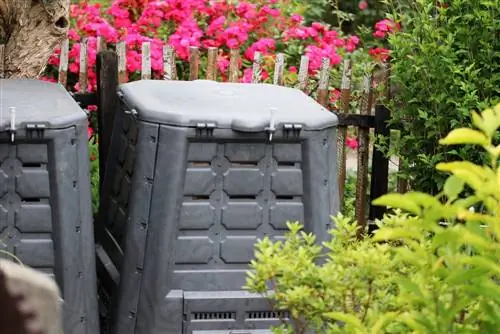
Opinions differ on this question. However, it is primarily about aesthetic aspects. In any case, there are no differences in the quality of the compost. In addition, rotting does not occur any faster in a closed container. Basically it doesn't matter which variant you choose. So-called slatted composters have proven to be an ideal compromise solution. They are something like a mix between a free pile and a container. Slatted composters are available from specialist retailers as complete kits. The construction is really easy. In principle, only wooden slats are placed on top of each other and fastened. There is still some free space between the individual slats. This maintains the appearance of a compost heap while still maintaining order.
Tip:
Only compost containers that are open at the top and bottom can be used. Composting requires direct contact with the soil.
Composting
To say it again: Composting itself is a highly complex process in which microorganisms, water and air interact with each other. Composting is also incredibly easy for every garden owner. In principle, organic waste has to be thrown into a heap. The rest will then sort of take care of itself. For this it is necessary that there is direct contact with the ground. The microorganisms work from there. As a result, composting always takes place from bottom to top. It also occurs in different stages, as new waste will always be added to the existing pile. It is therefore recommended that the compost is only used or cleared away once the entire heap of a garden year has been transformed. Normally the material then forms the basis for the new gardening year.

